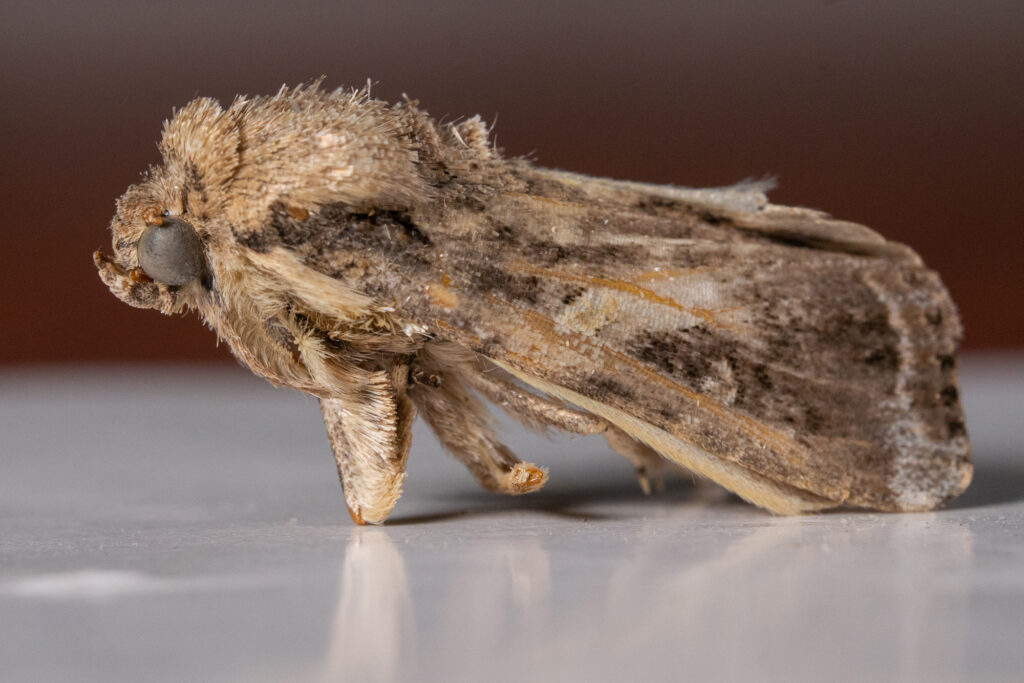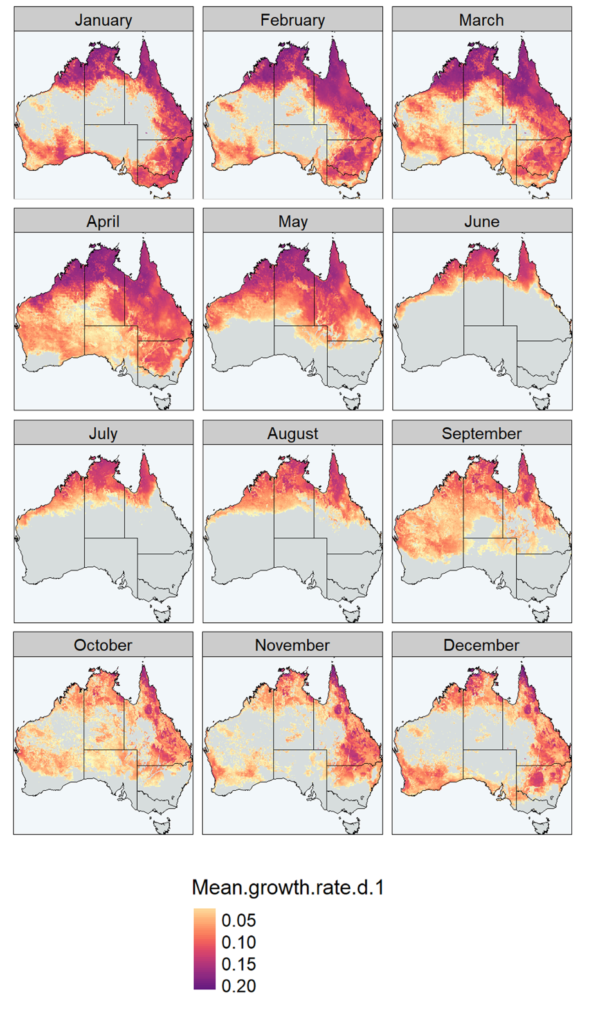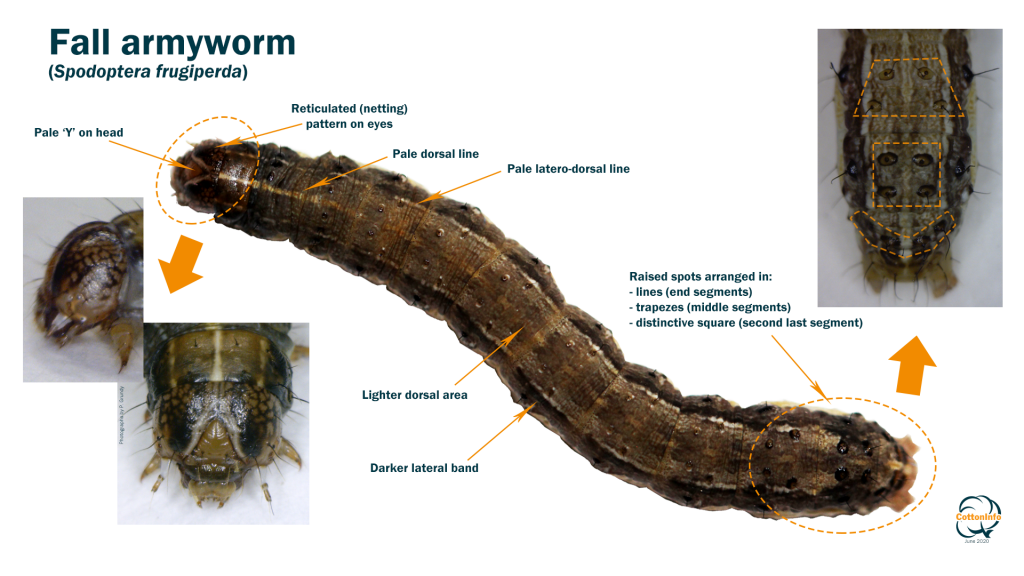Since its detection in Northern Australia in early 2020 fall armyworm, Spodoptera frugiperda, has migrated to other regions and has now been detected as far south as Victoria.
Here we outline the current status of fall armyworm and how we can gain a better understanding of its potential range and impact in south-eastern Australia.
Prior detections of fall armyworm
Fall armyworm was first detected on the Australian mainland in February 2020 and soon after established in tropical and sub-tropical regions of Queensland, Northern Territory and Western Australia.
By late September 2020, the moth had spread to Northern NSW, first detected between Moree and Boggabilla. Increased surveillance through state department of agriculture trapping networks and reports from vigilant advisers and growers led to further detections throughout NSW.
Now fall armyworm moths and larvae have been found in all NSW key summer cropping regions including the Central West, Riverina, Murray, and South East. NSW DPI is working with growers to develop ongoing management strategies.
Detections and trapping in Victoria
A fall armyworm moth has recently been detected near Kotupuna in Northern Victoria through a PestFacts south-eastern pilot trapping program.
This detection comes after Victoria’s first sightings in December 2020 with fall armyworm moths found in traps set-up in maize crops in Orbost, East Gippsland. Entomologists at Agriculture Victoria also report a further detection of fall armyworm moths near Bairnsdale in the same region.
In December, a pilot trapping program was established in Northern Victoria by our team to assess the type of by-catch (species other than fall armyworm) growers and advisers may trap when monitoring fall armyworm. We used two types of pheromone lures (ChemTica and Trece) in bucket traps.
The trapping program ran for 8 weeks with 2 traps at the crop boundary of 5 sites (Lockington, Corop, Kyabram, Kotupna and Shepparton). This resulted in the first detection in Northern Victoria from the site near Kotupna where a single male adult moth was found.

The findings of this pilot will be used to develop a grower guide for sorting trap catch and identifying suspect fall armyworm.
A seasonal presence in south-eastern Australia
The fall armyworm is a sub-tropical/tropical species, so it is unlikely to be able to survive colder conditions in Victoria over winter. However, the adults have the ability to disperse, with populations recorded moving 2000 km/year, which means it is can migrate to more southern regions.
Recent predictive modelling work led by Dr James Maino at Cesar Australia provides key insights into the regions of Australia where permanent, year-round populations are likely to persist, and those regions which could support seasonal populations only.
As shown in the fall armyworm population growth potential maps, if fall armyworm moths migrate from more northern regions of Australia to the south-east, conditions from December to March can support fall armyworm population growth.
However, come April, conditions become less favourable for fall armyworm in much of south-eastern Australia and by May, even if fall armyworm are still present, their populations will likely no longer be able to grow.
One thing to note is that if conditions are more mild than usual during late spring and autumn, it may extend the period of suitability in south-eastern Australia.

Monitoring is a must
There has been damage to maize crops in northern regions (see webinar from GRDC) but it remains to be seen how and if this species will impact crops in more temperate regions of Australia.
For the grains industry to develop an understanding of the spread and impact of fall armyworm in new regions grower and adviser reports and observations are crucial.
Current monitoring efforts use pheromone lures, which mimic the scent of the female in order to attract and trap the male moths. There are two lures currently available for use and permits are available via the APVMA.

In addition to lures, regular monitoring activities include inspections for both adults and larvae. Eggs can be found on the underside of leaves but are difficult to distinguish from other lepidopteran species.
The larvae look similar to other armyworm species, but have more distinctive spots and a white ‘Y’ pattern on the head in later instars (similar to some other moth larvae).

The adults moths measure 3-4 cm from wingtip to wingtip and both sexes have a white hindwing with a dark-brown margin. The wings are mottled brown, with the male moths more patterned than the females, and have a triangular white spot at the tip and near the centre of each forewing which distinguishes them from other similar moths.
For more information on identification see the fall armyworm datasheet from CABI.
A fall armyworm Continuity Plan has been developed to provide the grains industry with the most up to date information is available to facilitate a quick and flexible move to management.
How to report
While state governments will not attempt to eradicate this species, fall armyworm remainsa notifiable pest in Victoria and NSW; it is important to remain vigilant in monitoring and to report any suspected sightings by:
- Calling the Exotic Plant Pest Hotline 1800 084 881 (All states) or
- Completing an online form (NSW or Victoria) or
- Emailing a photo to biosecurity@dpi.nsw.gov.au (NSW)
For more information
The Beatsheet – Fall armyworm (August 2020)
Fall armyworm – GRDC Grains Research Update, online
Regional and seasonal activity predictions for fall armyworm in Australia – Maino et al. 2021
Acknowledgements
Thank you to the agronomists for helping source sites, and the growers who made trapping sites available.
Thanks also to Dr James Maino, Julia Severi and Dr Jessica Lye for assisting with the development of this article.
Cover image: Photo by Phil Sloderbeck, Kansas State University, Bugwood.org, CC BY-NC 3.0 US





